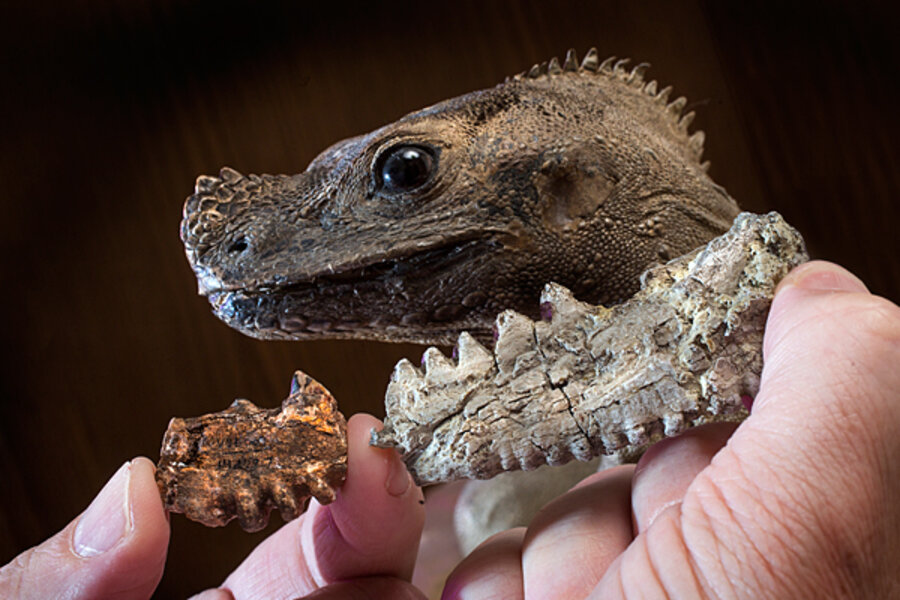Extinct reptile named for 'lizard king' Jim Morrison
Loading...
An extinct plant-eating reptile that roamed the steamy forests of Southeast Asia some 40 million years ago has been named for Doors frontman Jim Morrison.
Jason Head, a paleontologist at the University of Nebraska-Lincoln and his colleagues describe the reptile – named Barbaturex morrisoni – this week in the scientific journal Proceedings of the Royal Society B. It lived in the strange days when the Earth's poles were ice-free and atmospheric carbon dioxide levels were nearly twice what they are today, and, at six feet long and upwards of 60 pounds, it was one of the largest known lizards ever to walk on land.
B. morrisoni's remains had been waiting for the sun a long time. The giant lizard's remains were unearthed in Myanmar – a country located between the Horse Latitudes – in the 1970s, but they languished at the University of California Museum of Paleontology until a few years ago, when Head and his team began examining them.
Dr. Head noticed that the reptile's jawbone sported ridges that, in some modern lizards, support flaps of soft tissue that give them a bearded appearance. He concluded that this ancient creature woke up one morning and got itself a beard, so he gave it the genus name Barbaturex, which means "bearded king."
Head was surprised by how big the lizard was. Modern-day plant-eating lizards, such as iguanas, tend to be much smaller than their mammalian counterparts. That B. morrisoni managed to compete with other mammals for food and resources could mean that the size of lizards is not limited by predation by mammals, but by climate.
So exactly how does Mr. Mojo Risin' fit into all of this? Oh, don't ask why.
"I was listening to The Doors quite a bit during the research," Head said, in a UNL press release. "Some of their musical imagery includes reptiles and ancient places, and Jim Morrison was of course 'The Lizard King,' so it all kind of came together."
(This is the end.)








